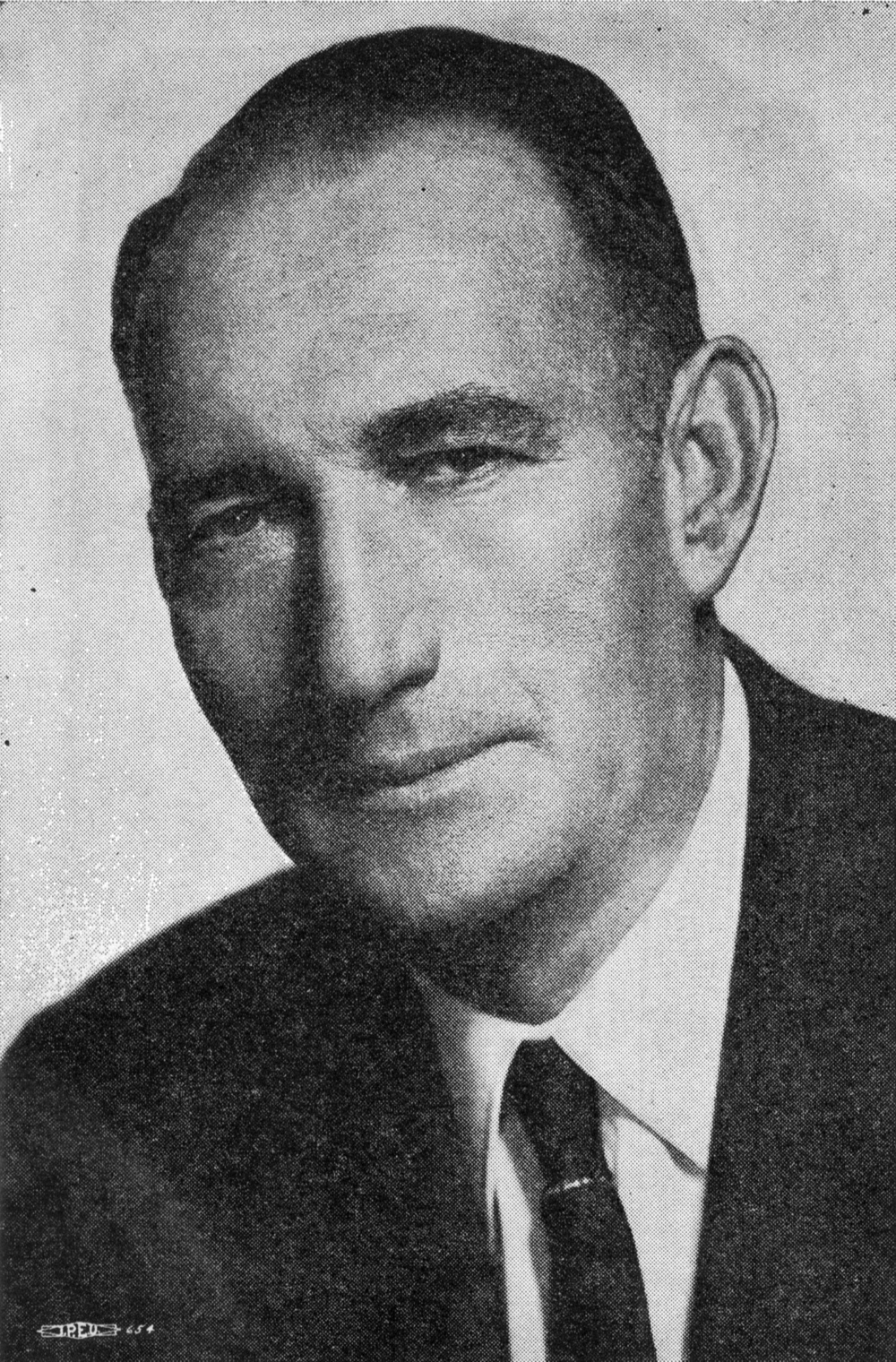|
|

William G. "Bill" Bonelli.
SCVHistory.com | November 2000.
|
He served in the Aviation Section of the U.S. Army in 1918-19 and remained in the Reserve as a pilot until 1934. Bonelli obtained his Master of Arts degree from Occidental College in 1923, his Doctor of Jurisprudence degree from Southwestern University in 1924, and was admitted to the California Bar in 1925. He was Associate Professor of Political Science at Occidental college for seven years until 1929. His public service record began in 1927 when he was elected President of the Los Angeles City Council. In 1931 he was elected to the California State Legislature from the 54th District and from 1934 to 1938 was Director of the State Department of Professional and Vocational Standards. For the past 16 years he has been the Southern California member of the State Board of Equalization. Bonelli is past President and current Executive Committee member of the National Association of Tax Administrators; past Chairman of the Federation of Tax Administrators, and present Advisory Council member of the Tax Institute. Written in 1954, the foregoing is from the flyleaf of Bill Bonelli's "Billion Dollar Blackjack: The Story of Corruption and the Los Angeles Times." Whether Bonelli was one of California's "best-known officials," he was certainly one of its most colorful. Legendary was his running battle with the Los Angeles Police Department and Harrison Gray Otis's and Harry and Norman Chandler's Times — which he likened to "a black-jack, a bludgeon, a weapon to be used in behalf of their friends and against their enemies." In his exposé he accuses the Times of all manner of malfeasance, from king-making and union-busting to subverting laws, violating civil rights and "aligning class against class, race against race, in an attempt to make bigger profits for themselves." Meanwhile, of course, Bonelli was creating a little empire of his own in the Santa Clarita Valley. His landholdings may have paled in comparison to those of the Times (which at opportune times included much of the San Fernando Valley and the 270,000-acre Tejon Ranch), but he was a major investor on a local scale. While he blasted the Times for being in on the "secret" dealings in the early 1900s to rob Owens Valley farmers of their water in order to feed L.A.'s growth — and while there is no indication of impropriety on his own part — he did form the Santa Clarita Water Co. to feed his own development interests, beginning with his "Rancho Santa Clarita" in Seco Canyon. Known as the Bonelli tract, this was the valley's first postwar housing tract (the first were the 1930s "Bermite homes" in Newhall), and it was the first time the name "Santa Clarita" was attached to anything. (The Hart High School District was almost the "Santa Clarita Valley" district, but William S. Hart, the valley's most famous citizen, died in 1946 just as the district was being established.) Bonelli sited the water company headquarters next to another one of his holdings — Bonelli Stadium, later known as the Saugus Speedway, which he acquired in 1937. Bonelli started auto-racing there two years later — after, coincidentally, blasting the Times for its alleged interests in the Santa Anita racetrack. For all his controversy, Bonelli gave lavishly to community organizations in the Santa Clarita Valley and was instrumental in the establishment of several others — for instance, he gave the Santa Clarita Methodist Church a good price on a piece of land on Bouquet Canyon Road. His son, Dr. William Bonelli Jr., continued in that tradition; in 1966 Bill Jr. was named "Outstanding Citizen of the Year" by the Newhall-Saugus Chamber of Commerce (precursor to the SCV Man and Woman of the Year) and later served on the initial College of the Canyons board.
|
SEE ALSO:
Grand Jury Indictment 1939
Calls for Midnight Liquor Curfew 1942
Bio from Billion Dollar Blackjack (1954)
|
The site owner makes no assertions as to ownership of any original copyrights to digitized images. However, these images are intended for Personal or Research use only. Any other kind of use, including but not limited to commercial or scholarly publication in any medium or format, public exhibition, or use online or in a web site, may be subject to additional restrictions including but not limited to the copyrights held by parties other than the site owner. USERS ARE SOLELY RESPONSIBLE for determining the existence of such rights and for obtaining any permissions and/or paying associated fees necessary for the proposed use.
 William G. Bonelli, son of a pioneer American family of Swiss-English descent, has become one of California's best-known officials during his 25 years of public service. Born November 9, 1895, in Kingman, Arizona, Bonelli came to Los Angeles in 1912, entered the University of Southern California and received his Bachelor of Arts degree in 1916.
William G. Bonelli, son of a pioneer American family of Swiss-English descent, has become one of California's best-known officials during his 25 years of public service. Born November 9, 1895, in Kingman, Arizona, Bonelli came to Los Angeles in 1912, entered the University of Southern California and received his Bachelor of Arts degree in 1916.

